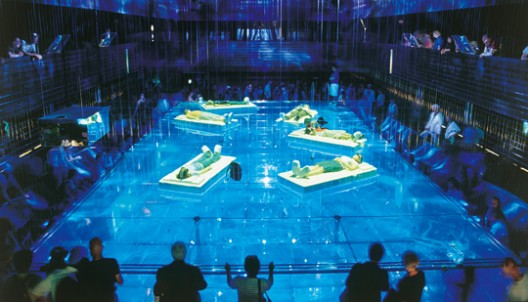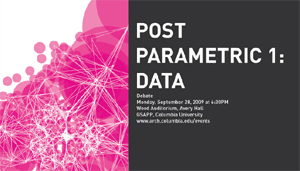Friday, January 07. 2011
Critical Futures Debate: A Domus Event in London

Courtesy of Domus
Moderated by Joseph Grima (Domus), all are invited to the free Critical Futures event starting at 6:30pm on January 13th, which will focus on a debate on the future of architecture criticism followed by complimentary drinks and further discussion after the talk. Participants include Charles Holland (author, Fantastic Journal), Peter Kelly (Blueprint), Kieran Long (architecture critic, Evening Standard), Geoff Manaugh (author, BLDGBLOG), and Beatrice Galilee (writer, curator, DomusWeb, The Gopher Hole). The event is located at The Gopher Hole, 350-354 Old Street, London, EC1V 9NQ. More event description after the break.
Over the past decade, epochal transformations have profoundly reshaped the context within which architecture is conceived and debated. The Internet has made images and information free and instantly ubiquitous; magazines, once the undisputed platforms for the criticism of architecture and design, have been challenged to redefine their purpose and economic model in the light of dwindling readerships; blogs have given a global audience, potentially of millions, to anyone with an Internet connection. In all of this, architecture criticism in the traditional sense appears to have all but vanished – not only from the Internet but from magazines themselves. As Peter Kelly, editor of Blueprint, wrote in a recent editorial, “As traditional publishing media and institutions become less influential, one wonders where architects can go to find informed, intelligent criticism of their work”.
Does, as author of BLDGBLOG Geoff Manaugh proposes, the designer of the videogame Grand Theft Auto have more influence as an architect than David Chipperfield? Is criticism in the traditional sense still relevant or useful? If the role of the print publication in contemporary production irreversibly declines, what is its future role? What forces will shape architectural production in a post-critical environment? Is, as Kelly writes, a more realistic and rigorous approach to architectural criticism online urgently needed?
As the first in a three-part series of debates on the future of architecture criticism organized by Domus in London, Milan and New York to celebrate the launch of its new website, this discussion will bring together writers, editors, bloggers and theorists active in the field today to address these and other questions.
The event will be hosted by The Gopher Hole, an exhibition and events space in Shoreditch, London.
Thursday, September 23. 2010
Off we are...
By fabric | ch
-----
We've been off for two weeks while travelling and exhibiting in California during the 2010 01SJ Biennial festival, where we've been presenting a new work entiltled I-Weather as Deep Space Public Lighting. We are currently doing a Lift workshop in Pécs organized by the Kitchen BudaPest.
While we thought we would be able to continue posting during this "travel-exhibit-workshop" time, it happens it didn't / it don't! Too much work to do, too much things going on...
fabric | rblg will be alive again from next week on and we'll post some "follow-up" pictures of the 01SJ exhibition as well!
Monday, August 30. 2010
The Urban Internet of Things 2010. An International Workshop
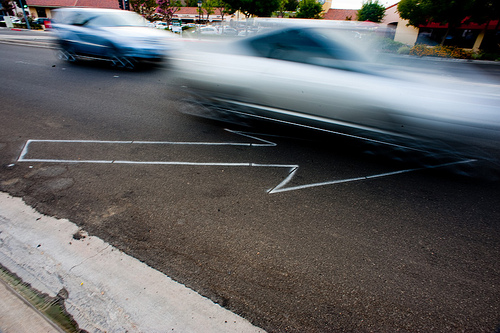
Coming up is an exciting sounding workshop on the “urban internet of things — programming the real-time city.” Some more opportunities to get this one right..or at least human.
** As more people move to cities, it becomes increasingly challenging )) the necessarily understated preamble (( to build efficient )) maybe we shouldn’t even hope for efficiency (( infrastructures that support the needs of inhabitants without sacrificing the quality of life. The increasing digital instrumentation of urban areas through various networked sensors provides many opportunities to design smarter cities )) smart? i’d settle for clever and wily (( through a meaningful interpretation and usage of all this real-time data. In today’s world, there are strong incentives to leverage the most recent technologies to create digital infrastructures that foster collaboration between the different disciplines involved in urban design. By considering the IoT as a platform for engaging citizen’s action, a new design space is created where citizens are at the center of its urban environment and empowered to actively shape the city they live in.
The goal of this workshop is to gather original and inspiring contributions from technology experts, researchers in academia and industry, designers, urban planners, and architects that are willing to share their knowledge, experiences, and best practices for building smarter cities. We will explore the design of open and efficient platforms and tools to collect, analyze, store, and share the enormous amount of real-time data digital cities generate through a mix of papers, demos, invited presentations and open discussions for collectively create the city of the future. **
http://www.webofthings.com/urban-iot/2010/
Related Dispatches:
- Microsoft Social Computing Symposium 2010 – Notes Get the flash player here: http://www.adobe.com/flashplayer var so = new SWFObject("http://www.db798.com/pictobrowser.swf", "PictoBrowser", "500", "500", "8", "#EEEEEE"); so.addVariable("source", "sets"); so.addVariable("names", "SCS2010"); so.addVariable("userName", "julianbleecker"); so.addVariable("userId", "66854529@N00"); so.addVariable("ids", "72157623066738659"); so.addVariable("titles", "on"); so.addVariable("displayNotes",...
- David Byrne Urbanism Backstage, this plus bicycles, Notingham, England. This is a nice, succinct reflection on the characteristics of cities, and the characteristics personally likable by David Byrne, titled David Byrne’s Perfect...
- Upcoming essay on the asynchronous city A high altitude imaging system for providing curious asynchronous perspectives of the world for analysis and synthesis. Artist’s interpretation, by Rhys Newman. Via Nicolas — Upcoming piece about the asynchronous...
Friday, May 14. 2010
Save the Date: Postopolis! DF
In just under a month, I am delighted to announce, I will be eagerly exploring the edible geography of Mexico City. The occasion is Postopolis! DF, the third in a series of events organised by Storefront for Art and Architecture. Postopolis! was launched in New York City in 2007, and it happened all over again in L.A. in 2009. I was lucky enough to attend both events as an audience member, and to be invited to participate this time is an honour indeed.
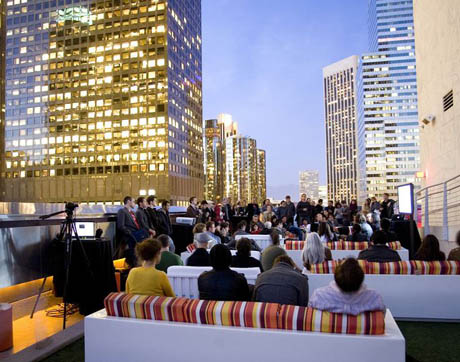
IMAGE: Postopolis! LA
The way Postopolis! works is that a handful of bloggers are invited to co-curate five days of back-to-back presentations and discussions that approach the field of urban and landscape design from as many disciplines and perspectives as possible. The list of participating blogs this year forms an impressive group: Urban Omnibus (Cassim Shepard), Intersections (Daniel Hernandez), DPR Barcelona (Ethel Barona Pohl), Toxico Cultura (Gabriella Gomez-Mont), Tomo (Guillermo Ruiz de Teresa), Mudd Up! (Jace Clayton a.k.a DJ /rupture), We Make Money Not Art (Regine Debatty), Strangeharvest (Sam Jacob), and Wayne & Wax (Wayne Marshall).
Together, we’re putting together a list of speakers that ranges from government officials to DJs, academics to urban farmers, and waste disposal experts to documentary filmmakers—via a healthy sprinkling of artists, architects, and designers.
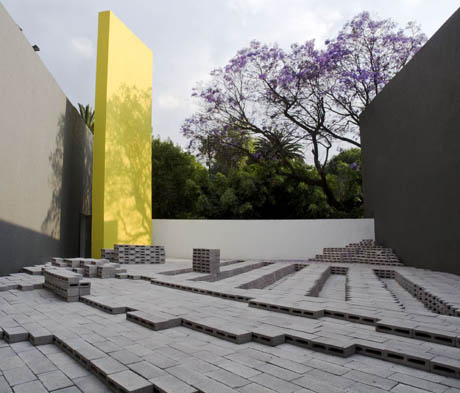
IMAGE: The courtyard at El Eco.
The five-day marathon will take place from 4 p.m. onwards between Tuesday, June 8, and Saturday, June 12, at the Museo Experimental El Eco in the Reforma Avenue neighbourhood of Mexico City. It is completely free and open to the public, the talks will be conducted in either Spanish or English, with simultaneous translations available, and each day will end with an after-party hosted by local music blogs. Rumour has it, the entire event will be streamed live online—I’ll confirm that nearer the time.
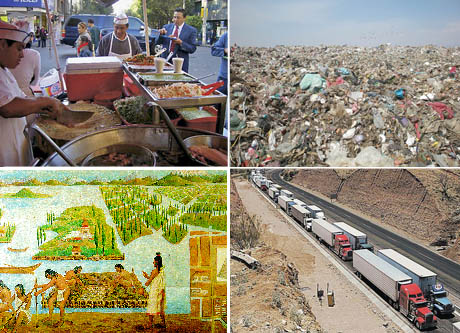
IMAGE: Clockwise: street food, the Bordo de Xochiaca dump, chinampas, and Mexican refrigerated trucks waiting to cross into the U.S.
Mexico, and Mexico City itself, offer a huge amount to discuss in terms of edible geography, from the chinampa system and the wheat and maize research of CIMMYT, to a fabulous diversity of street food and the U.S. FDA’s overseas expansion. Although the full speaker list and schedule is yet to be confirmed, Postopolis! DF is shaping up to be a pretty interesting event, and I definitely hope to see some of you there.
Related Links:
Personal comment:
This is a great event to which we took paert last year in LA (Postopolis! LA). Lots of ideas and speculations pop out from this event. If you have the occasion to go or be around (which won't be my case unfortunately), go!
Tuesday, March 16. 2010
Event:Electrosmog Festival (Amsterdam, March 18-20)
International Festival for Sustainable Immobility
http://www.ElectroSmogFestival.net
http://www.facebook.com/event.php?eid=365624342173
March 18 – 20, 2010
Concept
ElectroSmog is a new festival that revolves around the concept Sustainable Immobility. The festival will introduce and explore this concept in theory and practice. With Sustainable Immobility we refer to a critique of current systems of hyper mobility of people and products in travel and transport, and their ecological unsustainability.
The exploration of Sustainable Immobility is a quest for a more sustainable life style, which is less determined by speed and constant mobility. A lifestyle that celebrates stronger links to local cultures, while at the same time deepening our connections to others across any geographical divide, using new communication technologies instead of physical travel .
What we propose may sound a bit like a paradox: The proposition of the festival is that the unfolding crisis of mobility can only be effectively addressed by deepening our connections across geographical divides through new communication technologies. The festival wants to engage the fundamental promise of the information age that communication technologies can replace the need for physical mobility, and thus both contribute to ecological stability as well as a more rewarding both deep-local and translocal life-style. While this promise has existed since the dawn of the information age, it was never realised. New material realties, however, force us to critically re-examine these promises and seriously start to turn them into viable choices.
Nothing is self-evident for us. We will also critically question the underlying premise that reliance on electronic connections and local roots is self-evidently more energy efficient and more ecologically sustainable than current systems of globalised mobility of people and goods.
Is ‘going local’ the only solution?
What are the true energy costs and environmental and health hazards of using even more electronic technologies (increased levels of electrosmog)?
How can remote connections become a truly rewarding experience in and of themselves?
We believe that only by answering such questions a viable alternative to the current unsustainable systems of hyper-mobility can be found.
Bringing together a broad coalition
The ElectroSmog festival brings together a broad coalition of designers, environmentalists, urban and spatial planners, technologists, artists, theorists, and engaged and concerned citizens, to explore and ‘design’ sustainable immobility. The festival stakes its claim for a radical break with the current systems of hyper-mobility not simply by discussing the issue, but by actually implementing it. To achieve this the very concept of an international festival and its traditional conventions need to be rethought and redesigned from the ground up.
Connecting the local off-line local with the international on-line
ElectroSmog is a truly international festival, with everything you might expect of such a festival: international debates and discussions, performances, art projects, exhibits, site specific projects, screenings, design competitions, and much more. However, no presenter will travel beyond their local or regional boundaries to participate in this event.
To achieve this we will work together in a network of accomplished cultural and new media centres, labs, theatres and other public venues to create the local ‘hubs’ that will inter-connect for this unique festival.
A crucial dimension of the festival will be its on-line presence, where audiences from basically anywhere with an internet connection can follow events on-line, join in discussions and debates, and contribute to the program.
Beyond the broadband enclaves
ElectroSmog acknowledges from the start that bandwidth is not equally distributed across and within societies. Therefore remote connection to lower bandwidth spaces, do-it-yourself telematics, and information technologies for the majority world will be one the central concerns the festival wishes to address, again both in theory and in practice.
Thematic discussions, presentations and connected debates
The ElectroSmog festival-program is organised around a series of interlocking thematic programs, connected discussions and debates all transmitted live over the internet. Themes covered by these events include:
• Global views on the crisis of mobility
• Witnessed Presence
• Hyper-mobility and the urban condition
• City & regional branding debate
• e-mobility versus immobility
• Designing for (im-)mobility
• Public media art projects and sustainability
• Energy and information
• ElectroSmog is Good for You!
• Food and global mobility
• Deep local and remote technologies
Around the main program a host of satellite events is organised locally and translocally.
These include:
• Art projects and local interventions, including original works by Bureau des Etudes, Karen Lancel & Hermen Maat, John Cohns, Sean Kerr, Kevin McCourt & Bartolo Luque, and others.
• Special events, screenings, book launches, and more.
• A program of connected and localised workshops
• On-line projects and environments designed specifically for the festival.
-----
Via The Mobile City
Personal comment:
I re-publish this announcement just to underline the term "sustainable immobility", the very interesting related questions and the growing trend about moving less (people and goods), while mainly replacing/substituting physical mobility by digital communication (mediated mobility, so to say).
I don't agree on everathing that is written here but it's definitely worth thinking hard about it! Questions are interesting. How to mitigate mobility by communication and a sort of "hyper localness"?
My research directions would be "sustainable globalization", "sustainable mobility", "spaces interferences" or "spaces creolisations", "hyper vernacular" and "hyper localness" as well as "mediated mobility"!
Tuesday, March 02. 2010
The World in a Shell
Of all the shipping containers that will pass through
For five years, Hans Kalliwoda and Delft
The World in a Shell will premiere in Rotterdam, thereby starting its journey. Since art, technology and architecture come together In the container, the Netherlands Architecture Institute and V2_Institute for the Unstable Media are joining forces to organize a number of activities in and around the container. There will be workshops and a seminar on sustainability in art, architecture and science on April 1 at V2_. Follow Hans Kalliwoda's journey at http://www.worldinashell.net, or drop by The World in a Shell!
Because, technology and architecture coincide in The World in a Shell, the NAi and V2_ are joining forces to organize a number of activities in and around the container:
-------------------------------------------------------------------------------------------------
Official Opening: The World in a Shell
March 27 | 17:00 | NAi Museumpark, Rotterdam
Seminar: Art, Architecture-Science Collaboration in Sustainability
With Ute Meta Bauer, Robert Zwijnenberg and Hans Kalliwoda
April 1 | 19:30 | Admission: € 7,50 | V2_, Eendrachtsstraat 10, Rotterdam | Reservation required
Workshop: The Power of Logic Versus the Logic of Power
With Ion Sorvin (N55) and Anne Romme
April 2 | 10:00–18:00 | Admission: € 20,00 | Reservation required
Urban Adventure: A Walk in the Invisible City
With Petr Kazl and Wilfried Houjebek
April 9 | 16:00–18:00 | Reservation required
-----
Via V2_
Thursday, February 18. 2010
Unconventional Computing & Architecture
Friday 26 February, 9.00am - 6.00pm
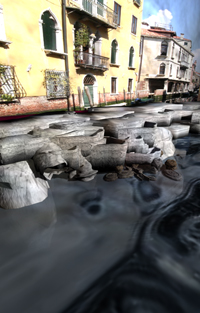
This one-day conference explores new materials for architectural practice in the 21st century. International architects and scientists will explore the decision-making properties of matter and how this may be applied to create increasingly life-like buildings.
Organised by The Bartlett´s Advanced Virtual and Technological Architecture Research (AVATAR) group, the conference aims to bring together architects and scientists who are working with new technologies that are capable of self-assembly and organization. Such technologies may form the basis for architecture generated by unconventional computing techniques which range from the actions of protocells, (entirely synthetic DNA-less agents), slime moulds (simple organisms with very complex behaviours), crystalline computing (using the organizing properties of molecules) and algae (that can be engineered to respond to environments in new ways). Neil Spiller founded the AVATAR Group in 2004, whose interdisciplinary research agenda explores all manner of digital and visceral terrain and considers the impact of advanced technology on architectural design, engaging with cybernetics, aesthetics, and philosophy to develop new ways of manipulating the built environment.
Speakers Include:
Neil Spiller (
Evan Douglis (Rensselaer Polytechnic Institute) Principal, Evan Douglis Studio, Dean of the School of Architecture at Rensselaer Polytechnic Institute, New York
Paul Preissner (
Lisa Iwamoto (
Philip Beesley (
Nic Clear (University College London) Director Diploma/MArch in Architecture, MArch (Architectural Design) AVATAR History and Theory Coordinator, The Bartlett School of Architecture
Martin Hanczyc (
Ben de Lacy Costello (University of West England) Senior Research Fellow,
Simon Park (
Lee Cronin (
-----
Related Links:
Monday, January 25. 2010
Architecture Therapeutics Aesthetics Conference
The Faculty of Architecture, Landscape and Design of the University of Toronto will held a conference on Architecture Therapeutics Aesthetics from February 26 till February 28. This conference will begin the public discourse that will be continued in our new Health Design graduate studies program currently in the planning stages.
It begins a dialogue between medicine and aesthetics examining the capacity for design to align evidence with intuition, quantitative analysis with qualitative judgment, science with art. The conference interrogates current ideas and practices defining the role of design in the promotion of health while seeking to foster an appreciation of how the forms of affective and cognitive experience associated with environmental aesthetics may clarify and amplify the goals that motivate therapeutic practices and institutions.
For more information, click here.
-----
Via ArchDaily
Sunday, September 27. 2009
Post Parametric 1: Data, a debate in Columbia University
In the post-parametric era, one key challenge for architectural design is the acquisition, processing, and integration of data. Designers already have an enormous amount of computable data from building simulations, physical sensing, geometric form, construction techniques, cost and location of materials—and the mountain of numbers shows every sign of rapid expansion.
This debate will explore what might be done with all of this data, and more broadly, how we might be designing architecture ten years from now. Post Parametric 1 is the first in a series of discussions that aim to question, broaden, and re-frame the way we think about computation and design.
The debate will take place tomorrow Monday at 6:30 PM, in the Wood Auditorium, Avery Hall, Columbia Unviersity. For more information, visit the official website.
-----
Via Archdaily
Personal comment:
Rentrons-nous dans l'ère du "post-parametric"? Déjà? (oui pour ce qui est du génératif pur, non pour le "data driven" je pense. Bien au contraire).
Thursday, August 27. 2009
Digital Architecture London Conference 2009
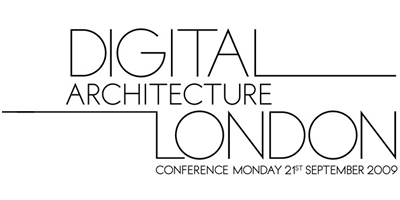
To celebrate London as a centre of design and innovation, the ‘Digital Architecture London’ Conference will take place at the Building Centre on 21st September 2009. Presenting a selection of London’s leading architects, artists, designers and engineers, the conference will examine how London is shaping the digital future of the built environment.
Introducing the latest developments in digital design practice, the conference will explore new spaces, social interactions, design and fabrication processes, and speculate on architecture’s post-digital futures.
Book now to secure your place:
http://www.digital-architecture.org/london/tickets/
Speakers include:
Patrik Schumacher, Director and Partner, Zaha Hadid Architects and Co-Founder, Design Research Laboratory, Architectural Association.
Neil Spiller, author of Digital Architecture Now [2008], Visionary Architecture [2007] and many more; Professor of Architecture and Digital Theory; and Director of AVATAR at the Bartlett School of Architecture.
Brett Steele, Director of the Architectural Association School of Architecture and AA Publications; and Co-founder and former Director of the AADRL.
Tony Dunne, Professor and Head of the Design Interactions Department at the Royal College of Art; and Co-founder of Dunne & Raby.
Geoff Manaugh, Author of the popular website BLDGBLOG and recently of The BLDGBLOG Book, Chronicle Books [2009].
Usman Haque, Director of Haque Design; Research and founder of Pachube.com; and recent recipient of the 2009 World Technology Award (Art), Design Museum, 2008 (Interactive) Design of the Year Award and Wellcome Trust Sciart Award.
As well as Murray Fraser, Hanif Kara (tbc), Rachel Armstrong, Bob Sheil, Charles Walker, Tobi Schneidler, Marcos Cruz, Alvin Huang, Matt Webb, Stephen Gage, Ruairi Glynn, Alan Penn, Marjan Colletti and more.
http://www.digital-architecture.org/london/programme/
Ticket Price: £55 inc VAT
A Limited number of Student Tickets are available at £15 inc VAT
Book at http://www.digital-architecture.org/london/tickets/
-----
Personal comment:
Plein de personnes que nous connaissons à cette conférence (mais pas de fabric | ch): Brett Steele, Geoff Manaugh, Tony Dunne, Usman Haque, Rachel Wingfield, etc. Je crois que c'est la deuxième année qu'ils organisent cette conférence à Londres. A suivre...
fabric | rblg
This blog is the survey website of fabric | ch - studio for architecture, interaction and research.
We curate and reblog articles, researches, writings, exhibitions and projects that we notice and find interesting during our everyday practice and readings.
Most articles concern the intertwined fields of architecture, territory, art, interaction design, thinking and science. From time to time, we also publish documentation about our own work and research, immersed among these related resources and inspirations.
This website is used by fabric | ch as archive, references and resources. It is shared with all those interested in the same topics as we are, in the hope that they will also find valuable references and content in it.
Quicksearch
Categories
Calendar
|
|
July '25 | |||||
| Mon | Tue | Wed | Thu | Fri | Sat | Sun |
| 1 | 2 | 3 | 4 | 5 | 6 | |
| 7 | 8 | 9 | 10 | 11 | 12 | 13 |
| 14 | 15 | 16 | 17 | 18 | 19 | 20 |
| 21 | 22 | 23 | 24 | 25 | 26 | 27 |
| 28 | 29 | 30 | 31 | |||
